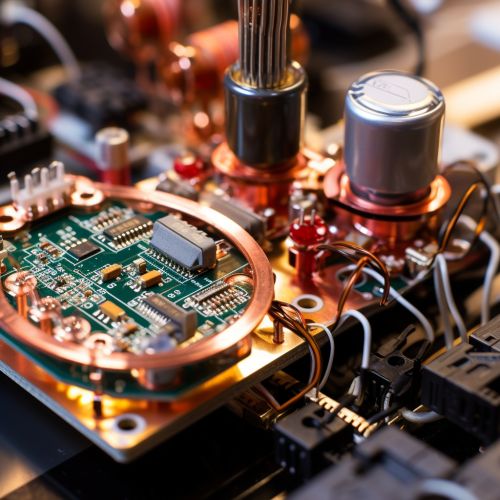Sensor Technology
Introduction
Sensor technology is a broad field that encompasses the design, development, and application of devices that detect and respond to various types of input from the physical environment. The input could be light, heat, motion, moisture, pressure, or any one of a great number of other environmental phenomena. The output is generally a signal that is converted to human-readable display at the sensor location or transmitted electronically over a network for reading or further processing.


Types of Sensors
There are numerous types of sensors, each designed to detect specific types of input. Here are some of the most common types:
Temperature Sensors
Temperature sensors are devices that measure heat to record temperature. They are used in a wide range of applications, from medical devices to home appliances, and industrial equipment.
Pressure Sensors
Pressure sensors measure the force exerted by a fluid or gas. They are commonly used in automotive, industrial, medical, and aviation applications.
Proximity Sensors
Proximity sensors are devices that detect the presence or absence of objects using electromagnetic fields, light, and other means. They are often used in mobile devices, automobiles, and industrial applications.
Light Sensors
Light sensors, or photodetectors, measure the intensity of light. They are used in a variety of applications, including digital cameras, safety equipment, and lighting control systems.
Motion Sensors
Motion sensors detect movement in a specific area. They are commonly used in security systems, automatic doors, and lighting systems.
Sensor Technology Applications
Sensor technology plays a crucial role in many areas of life, enabling systems to gather information from the environment, process it, and take appropriate action. Here are some of the key applications:
Industrial Automation
In industrial automation, sensors are used to monitor and control production processes. They can detect a wide range of conditions, such as temperature, pressure, flow, level, and force. By providing real-time data, sensors enable systems to adjust processes automatically, improving efficiency and quality.
Healthcare
In the healthcare sector, sensors are used in a variety of diagnostic and therapeutic applications. For example, temperature sensors are used in thermometers, pressure sensors are used in blood pressure monitors, and motion sensors are used in advanced surgical systems.
Automotive
In the automotive industry, sensors are used to monitor vehicle conditions and control systems. For example, pressure sensors are used to monitor tire pressure, temperature sensors are used to monitor engine temperature, and proximity sensors are used in parking assistance systems.
Consumer Electronics
In consumer electronics, sensors are used in devices such as smartphones, tablets, and wearable devices. For example, light sensors are used to adjust screen brightness, motion sensors are used for game control, and proximity sensors are used to disable touch screen functions when the user is on a call.
Future of Sensor Technology
Sensor technology is a rapidly evolving field, with new types of sensors and applications being developed all the time. Here are some of the key trends:
Internet of Things
The Internet of Things (IoT) is a network of physical devices, vehicles, buildings, and other items embedded with sensors, software, and network connectivity that enable these objects to collect and exchange data. Sensors are a key component of the IoT, enabling devices to gather data from the environment and interact with each other.
Wearable Technology
Wearable technology, such as smartwatches and fitness trackers, is another area where sensor technology is making a big impact. These devices use a variety of sensors to monitor health and fitness data, such as heart rate, sleep patterns, and physical activity.
Smart Cities
In smart cities, sensor technology is used to improve services and quality of life. Sensors can monitor a wide range of conditions, such as air quality, traffic, and energy usage, enabling city authorities to make informed decisions and respond quickly to issues.
